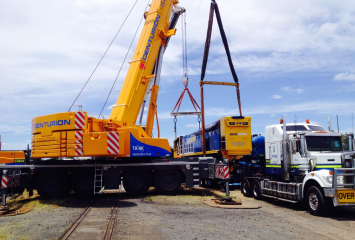
Rigging and Slinging Operation Safety
Rigging and Slinging Operation Safety Training Course

Rigging and Slinging Operation Safety Training Course
This training course provides essential knowledge and practical skills needed to safely perform rigging and slinging operations in various industries. It focuses on safe handling, inspection, and use of rigging equipment, including slings, hoists, and cranes. Participants will learn to identify hazards, prevent accidents, and comply with industry standards and regulations to ensure safety during lifting operations.
By the end of this training course, participants will be able to
Understand Basic Rigging Principles
Learn the terminology and concepts associated with rigging operations.
Understand load capacities, weight distribution, and center of gravity.
Proper Selection and Inspection of Rigging Equipment
Identify different types of slings, ropes, and lifting gear.
Learn to inspect rigging equipment for wear, defects, and proper condition.
Safe Slinging Techniques
Understand and apply different sling configurations (e.g., single-leg, double-leg, basket hitches).
Calculate load angles and understand their impact on load distribution.
Risk Assessment and Hazard Identification
Recognize common hazards in rigging and slinging operations.
Learn how to assess risk factors and implement control measures.
Lifting Procedures and Signal Communication
Understand the role of hand signals, verbal commands, and radio communication in ensuring safety.
Follow safe work practices for lifting operations and understand the importance of clear communication.
Lifting Plan Development
Understand the importance of pre-lift planning.
Learn how to develop a lifting plan, including equipment selection, load assessment, and crew coordination.
Emergency Procedures
Learn how to respond to emergency situations like rigging failure or accidents during lifting operations.
Legal and Regulatory Requirements
Understand key regulations (such as OSHA, ANSI, and other relevant standards).
Ensure compliance with local, state, and national safety laws regarding rigging and lifting operations.
Introduction to Rigging and Slinging
Overview of rigging and slinging operations
Terminology and key concepts
Types of rigging and lifting equipment
Rigging Equipment and Inspection
Types of slings (wire rope, chain, synthetic)
Inspection procedures and safety checks
Defects and damage in rigging equipment
Slinging Techniques and Load Calculations
Choosing the right sling and lifting method
Load angle considerations
Calculating load weight and load distribution
Hazard Identification and Risk Assessment
Common rigging hazards (e.g., overloading, environmental factors)
Risk assessment process
Control measures for safe operations
Safe Lifting Procedures and Communication
Safe lifting protocols
Role of lifting teams and equipment operators
Standardized hand signals and radio communication
Developing a Lifting Plan
Steps in planning a lifting operation
Identifying roles and responsibilities
Assessing environmental and site conditions
Emergency Response and Incident Handling
Recognizing failure signs
Emergency response procedures
Accident reporting and investigation
Regulations and Compliance
Overview of industry standards (OSHA, ANSI, etc.)
Legal responsibilities of employers and workers
Documentation and recordkeeping
Riggers
Crane Operators.
Supervisors and Managers
Safety Officers
Construction Workers
Warehouse and Logistics Personnel
Maintenance Teams